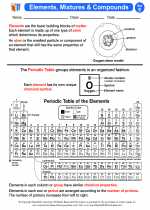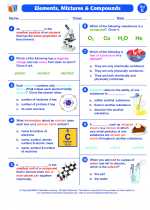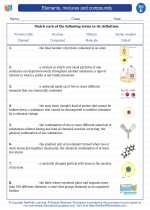Structure of Enzymes
Enzymes are typically proteins, although some RNA molecules can also function as enzymes. The structure of an enzyme is highly specific and allows it to interact with specific molecules, known as substrates. Enzymes have an active site where the substrate binds and the chemical reaction occurs.Enzyme Function
Enzymes facilitate chemical reactions by lowering the activation energy required for the reaction to occur. This allows the reaction to proceed more rapidly, enabling the cell to carry out necessary processes such as metabolism, DNA replication, and cellular respiration.Enzyme Naming
Enzymes are often named based on the type of reaction they catalyze, with the suffix "-ase" added to the substrate's name. For example, the enzyme that breaks down starch is called amylase.Factors Affecting Enzyme Activity
Enzyme activity can be influenced by several factors, including temperature, pH, substrate concentration, and the presence of inhibitors or activators.- Temperature: Enzymes have an optimal temperature at which they function most effectively. High temperatures can denature enzymes, while low temperatures can slow down their activity. - pH: Enzymes also have an optimal pH range at which they function best. Changes in pH can affect the enzyme's structure and, consequently, its activity. - Substrate concentration: As the concentration of substrate molecules increases, the rate of enzyme activity also increases until the enzyme becomes saturated with substrate. - Inhibitors and activators: Molecules known as inhibitors can bind to enzymes and inhibit their activity, while activators can enhance enzyme activity.Importance of Enzymes
Enzymes are vital for the proper functioning of living organisms. They are involved in processes such as digestion, photosynthesis, and DNA replication, and they enable cells to carry out essential functions efficiently.Study Guide for Enzymes
Key Concepts to Understand
- The role of enzymes as biological catalysts
- Enzyme structure and the function of the active site
- The relationship between enzymes and substrates
- The factors that affect enzyme activity, including temperature, pH, substrate concentration, and the presence of inhibitors or activators
- The importance of enzymes in cellular processes
Review Questions
- What is the role of enzymes in living organisms?
- Describe the structure of an enzyme and the function of its active site.
- Explain how enzymes facilitate chemical reactions by lowering the activation energy.
- How are enzymes named, and what do their names typically indicate?
- Discuss the factors that can affect enzyme activity and provide examples of each.
Activities and Further Study
- Research and create a presentation on a specific enzyme and its role in a particular biological process.
- Conduct a laboratory experiment to investigate the effect of temperature or pH on enzyme activity using a model enzyme-substrate system.
- Explore the use of enzymes in various industries, such as food production, detergents, and pharmaceuticals.
◂Science Worksheets and Study Guides Fifth Grade. Elements, mixtures and compounds
Study Guide Elements, mixtures and compounds
Elements, mixtures and compounds  Activity Lesson
Activity Lesson Elements, Mixtures and Compounds
Elements, Mixtures and Compounds  Worksheet/Answer key
Worksheet/Answer key Elements, mixtures and compounds
Elements, mixtures and compounds  Worksheet/Answer key
Worksheet/Answer key Elements, mixtures and compounds
Elements, mixtures and compounds  Worksheet/Answer key
Worksheet/Answer key Elements, mixtures and compounds
Elements, mixtures and compounds  Worksheet/Answer key
Worksheet/Answer key Elements, mixtures and compounds
Elements, mixtures and compounds  Vocabulary/Answer key
Vocabulary/Answer key Elements, mixtures and compounds
Elements, mixtures and compounds  Vocabulary/Answer key
Vocabulary/Answer key Elements, mixtures and compounds
Elements, mixtures and compounds 

 Activity Lesson
Activity Lesson
 Worksheet/Answer key
Worksheet/Answer key
 Worksheet/Answer key
Worksheet/Answer key
 Worksheet/Answer key
Worksheet/Answer key
 Worksheet/Answer key
Worksheet/Answer key
 Vocabulary/Answer key
Vocabulary/Answer key
 Vocabulary/Answer key
Vocabulary/Answer key

The resources above cover the following skills:
PHYSICAL SCIENCE (NGSS)
Matter and Its Interactions
Students who demonstrate understanding can:
Conduct an investigation to determine whether the mixing of two or more substances results in new substances.